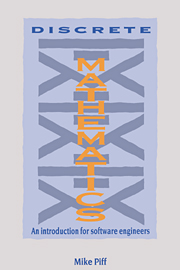Summary
Computing was historically taught as a branch of mathematics, usually of applied mathematics if a distinction was made. This family union came to an end when computer science diverged from mere numerical calculations towards more general objects such as data records, parse trees, and also the theory of how a computer works. The emphasis has recently become more mathematical, but with a different sort of mathematics. Also, computer science has itself spawned its own offspring, in the shape of software engineering and information technology.
Mathematics departments accustomed to teaching first year single honours mathematics undergraduates normally teach them a course in continuous mathematics and one on abstract algebra, or linear algebra, or both. Computer scientists have been pressing for their first year to be taught mathematics which is more relevant to the current needs of that discipline, and, in particular, some discrete mathematics. The content of discrete mathematics is broadly similar to what used to be known as combinatorics, but also includes topics from the foundations of mathematics, such as logic and set theory.
This book is designed as a course in discrete mathematics for first year computer scientists or software engineers in universities and colleges of further education. The book should form the basis of a full, one year option of two lectures a week, either as a subsidiary course to computer science, or as part of a mathematics first year option, say replacing part or all of the algebra normally taught there.
- Type
- Chapter
- Information
- Discrete MathematicsAn Introduction for Software Engineers, pp. ix - xiiPublisher: Cambridge University PressPrint publication year: 1991

